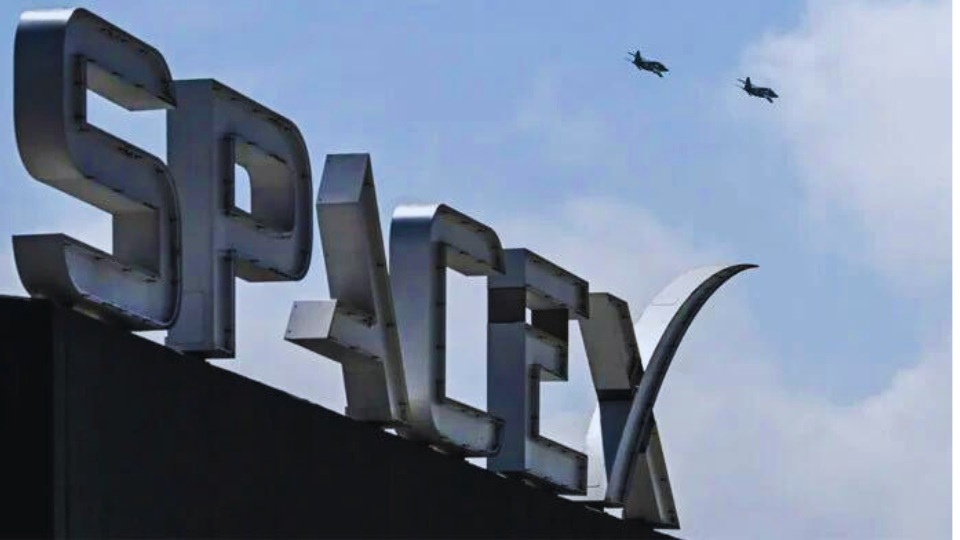Reports link SpaceX to a classified satellite project (Starshield) for the US NRO. The project’s purpose, potential benefits, and wider implications are unclear.
SpaceX continues to aggressively expand its ambitious Starlink internet constellation, launching another 23 satellites on a Falcon 9 rocket. This mission, hot on the heels of the impressive third Starship test flight, exemplifies SpaceX’s unwavering commitment to space exploration and the democratization of internet access.

Overcoming Launch Day Hiccups
The launch, designated Starlink Group 6-44, occurred on schedule after two previous attempts were scrubbed near the countdown’s end due to a technical glitch with the transporter erector’s cradle arms. SpaceX engineers promptly addressed the issue, ensuring a successful liftoff on the third try.
Launch Details and Orbital Trajectory
At 8:21 PM ET on an unspecified date, a Falcon 9 rocket roared to life from Launch Complex 39A at Kennedy Space Center in Florida. Carrying the precious cargo of 23 Starlink satellites, the rocket embarked on a south-easterly trajectory, aiming for a 43-degree orbital inclination. This specific orbital path is carefully chosen to optimize network coverage within the Starlink constellation.
Following a successful launch, the newly deployed satellites will undergo a series of checkouts while in orbit. This critical phase involves testing their functionality and ensuring they are operating within expected parameters. Once deemed operational, the satellites will gradually raise themselves to their final operational altitude over the next few months. This meticulous process ensures optimal performance and minimizes the risk of collisions with other objects in orbit.
Mission Highlights and Ongoing Operations
This Starlink launch marks SpaceX’s 25th mission of 2024, solidifying their position as a frontrunner in space exploration and internet infrastructure development. Notably, 15 out of these 25 missions were dedicated to Starlink launches, highlighting SpaceX’s unwavering focus on building this mega-constellation.
With this successful mission, SpaceX has deployed a staggering 6,011 Starlink satellites to orbit. However, not all are operational yet. According to Jonathan McDowell’s Starlink tracking site, 5,614 Starlink satellites currently reside in orbit, with 5,131 actively functioning within their designated operational bands. These operational satellites are already providing much-needed internet access to underserved regions around the globe.
The Starlink constellation is also being bolstered by the introduction of the next-generation Starlink satellites. This second-generation iteration, known as Gen 2 mini Starlink, boasts improved capabilities and smaller footprints. The recent launch included 1,967 of these Gen 2 satellites (part of Groups 5, 6, and 7), which are gradually being maneuvered into their operational positions. These advanced satellites promise to enhance network capacity and overall performance of the Starlink constellation.
The workhorse behind this launch was none other than the veteran Falcon 9 Booster 1062. Having launched 45 days prior on a previous Starlink mission, Booster 1062 exemplifies SpaceX’s strategy of reusing its reliable Falcon 9 cores. This recent mission marked Booster 1062’s 19th flight, tying it with B1061 for the most missions flown by a SpaceX booster. This achievement underscores the reusability and cost-effectiveness of SpaceX’s Falcon 9 rockets, contributing significantly to the economic feasibility of the Starlink project. Even more impressive is the fact that B1062 has successfully delivered a remarkable 528 payloads and 8 human crews to orbit, making it a cornerstone of SpaceX’s launch history.
SpaceX shows no signs of slowing down. Their next mission involves launching another batch of Starlink satellites, this time from California, with a launch window no earlier than March 18th. The relentless pursuit of Starlink constellation expansion continues, bringing SpaceX ever closer to its goal of providing global internet coverage and revolutionizing the way we connect.



















